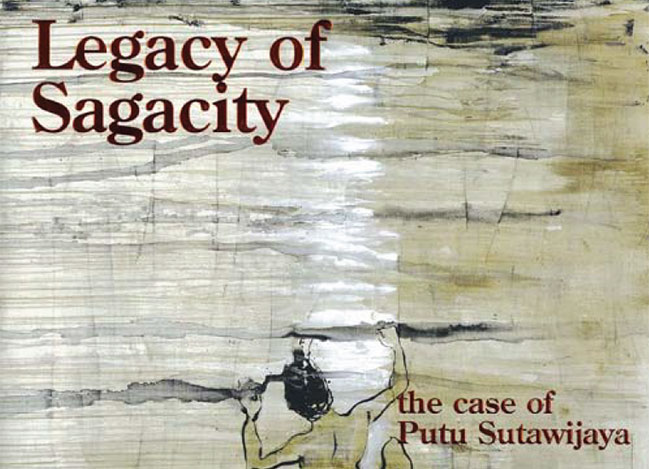Legacy of Sagacity The Case of Putu Sutawijaya
Balinese life cannot be separated from art. Various activities and traditional events are always imbued with art. Right from early childhood Balinese children are familiar with the sound gambelan as well as watching traditional dance performances. They are also familiar with the making of offering devices for the ceremony, beautiful objects loaded with artistic creativity. Colorful flowers, banners and traditional Balinese fabrics provide artistic stimulus to children’s eyes in Bali. Fragrant smell of incense and soothing sound of bells deliver meaningful experiences. No wonder, many people believe every Balinese is an artist. At minimum level Balinese should know how to dance, playing traditional musical instrument or painting.
Art activity cannot be separated with Balinese everyday life, art in Bali is not limited in production of a work of art. Balinese tradition is still a strong with communal character that differentiates it with individual character in modern art. Art is regarded as a cultural activity, so it is safe to say that the face of Bali is shaped by art, in which morality is also included. Balinese morality comprises of three spaces that influence each other namely individual space, social space and magical space. Bali can be used as an entry point to dissect the understanding and practice of art in Indonesia. The understanding and practice of art in Indonesia is based on belief in morality that promotes virtue and goodness. This belief is an integral part of understanding the underlying aesthetic thinking in Indonesian art. It is reflected on the meaning of the term ‘art’ in Bahasa Indonesia that is an aesthetic ideas derived from the term ‘kagunan which appeared in the 19th century.
A book entitled Legacy of Sagacity discusses position of art in Indonesia through discourse of contemporary art. Through exposition of his writing, Jim Supangkat tries to dissect the symptoms of emerging contemporary art in Indonesia. Author argues that contemporary art is now becoming a mainstream movement in the growth of art world and will serves a lever to raise a platform to discuss the diversity of the art world.
The tradition of art in Bali (Indonesia) has a difference with the understanding of art in the Western tradition. The word ‘seni’ that refers to art, is derived from word ‘kagunan’ that has basic form “guna” that means useful and gainful employment. In Java Baosastra the word “guna” means character, skills, strengths, beneficial results or results that are useful (mental activity). In addition kagunan also refers to “mental activity” associated with “inspiration” and a “surging poetic sense”. Aesthetic principle of Kagunan fills the meaning of the word “art” in Bahasa Indonesia.
Building a reading frame that can be used as a framework for understanding art in Indonesia, this book presents the works of Putu Sutawijaya. Putu Sutawijaya living up the requirements as his works connects with morality that forms Balinese culture. Displaying a colored works of Putu Sutawijaya, this book gives more complete discussion in the understanding of art and position of art in the Indonesian in term of contemporary discourse.
Equipped with photos of Hanafi’s abstract paintings, adds perfection to this exhibition catalog. This catalog deserves to be read and known by observer and lover of art.
Book Title : Legacy of Sagacity; The Case of Putu Sutawijaya,
Author: Jim Supangat,
Book Reviewer: Agus Eka Cahyadi,
Publisher : Canna Gallery,
ISBN 978-979-25-6371-9,
Length : 264 pages, 120 color images,
Year : 2008.
This book could be found at Komaneka Fine Art Gallery.

